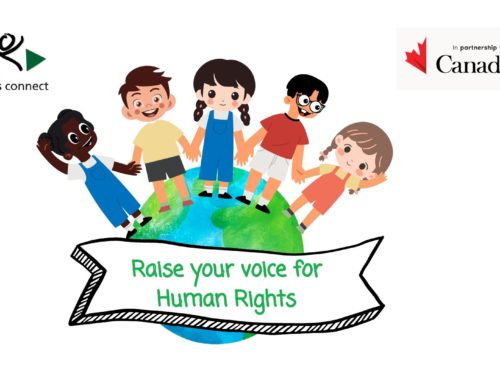As negotiations on the Rev.2 of the Pact for the Future are underway, the ImPACT Coalition on Child Rights and Child Participation, which Child Rights Connect is part of, prepared the below statement with a unanimous voice to ensure that the last revision of the Pact for the Future properly includes children and their rights!
We thank all co-leads of the ImPACT Coalition for leading efforts in New York!
Find here the statement:
The ImPACT Coalition on Child Rights and Child Participation is made up of over 100 plus
member organizations. We here by share our views and language suggestions on Rev. 2 of the
Pact for the Future:We welcome explicit references to children in Chapter 4, particularly the reaffirmation of a key
statement from the 2030 Agenda for Sustainable Development recognizing children as critical
agents of change.We also welcome the recognition of the specific challenges facing the current generation of
children and youth, including extreme poverty and access to critical services. As such, we
strongly support the inclusion of a specific commitment to invest in the social and economic
development of children in Action 37, including in the areas of health, education and social
protection.Although the Rev. 2 of the Pact for the Future includes new explicit references to children, it still falls short
in ensuring a child-centered lens throughout the Pact with concrete actions that will deliver for and with
children, leaving no one behind.Ensuring a child-rights lens across the Summit and its outcomes is essential to break
intergenerational cycles of poverty and inequality, fulfill child rights and fundamental freedoms,
and build prosperous, sustainable, peaceful and resilient societies for the future – together with
children.We believe the Pact can be further enhanced to truly fulfil the Summit’s vision of delivering a
better present and safeguarding the future. We present the following specific suggestions:One: the Pact should uphold children’s right to meaningfully participate in all matters affecting
them as guaranteed by the Convention on the Rights of the Child – the most widely ratified
human rights instrument in existence. Children, especially the most vulnerable ones and
considering all their diversity, are bearing the brunt of the multiple and interlinked crises
impacting the world today – be it the hunger and learning crises, conflict, climate change,
economic downturns and other global shocks. We must actively engage and genuinely listen to
children to understand how they are impacted to inform policies and programmes designed to
address these impacts and protect their rights. We urge Member States and the co-facilitators
to address this in Actions 39 and 40 in the final version of the Pact, as well as in the Chapeau.Two: while we welcome the addition of a new Action on ending hunger and food insecurity in
Chapter 1, we note that ending hunger must go beyond actions aimed at improving agricultural
systems and supply chains. Malnutrition affects more than 230 million children around the
globe. To urgently address this, we suggest including a subparagraph on scaling up early
detection and treatment for acute malnutrition, prioritizing the integration of essential
nutrition actions into national health systems and policies, training and supporting health
workers to treat malnutrition, as well as protecting, promoting and supporting infant and young
child feeding.Three: As set out in the UN Convention on the Rights of the Child (UNCRC), children, all human beings
under 18, constitute a group of distinct rights holders under international law and they must be recognized
as such. Children should not be subsumed in other, different groups such as “youth”, “young people” or
“future generations”. These terms are not defined by international law and describe separate
demographics with different (sometimes overlapping) rights.Finally, noting that more than half of the world’s children are subjected to violence on a regular
basis, the Pact should include a stronger commitment towards ending and preventing all forms
of violence against children, both online and off. This can be captured in Chapter 2, Action 18,
para 36a, Chapter 3, Action 33, para 54 (a), and Chapter 4, para-Action 38, 61 and its sub paras
d and e. In Chapter 2, we suggest language in para 32b on the provision of comprehensive and
long-term support systems for children affected by armed conflict.






Leave A Comment